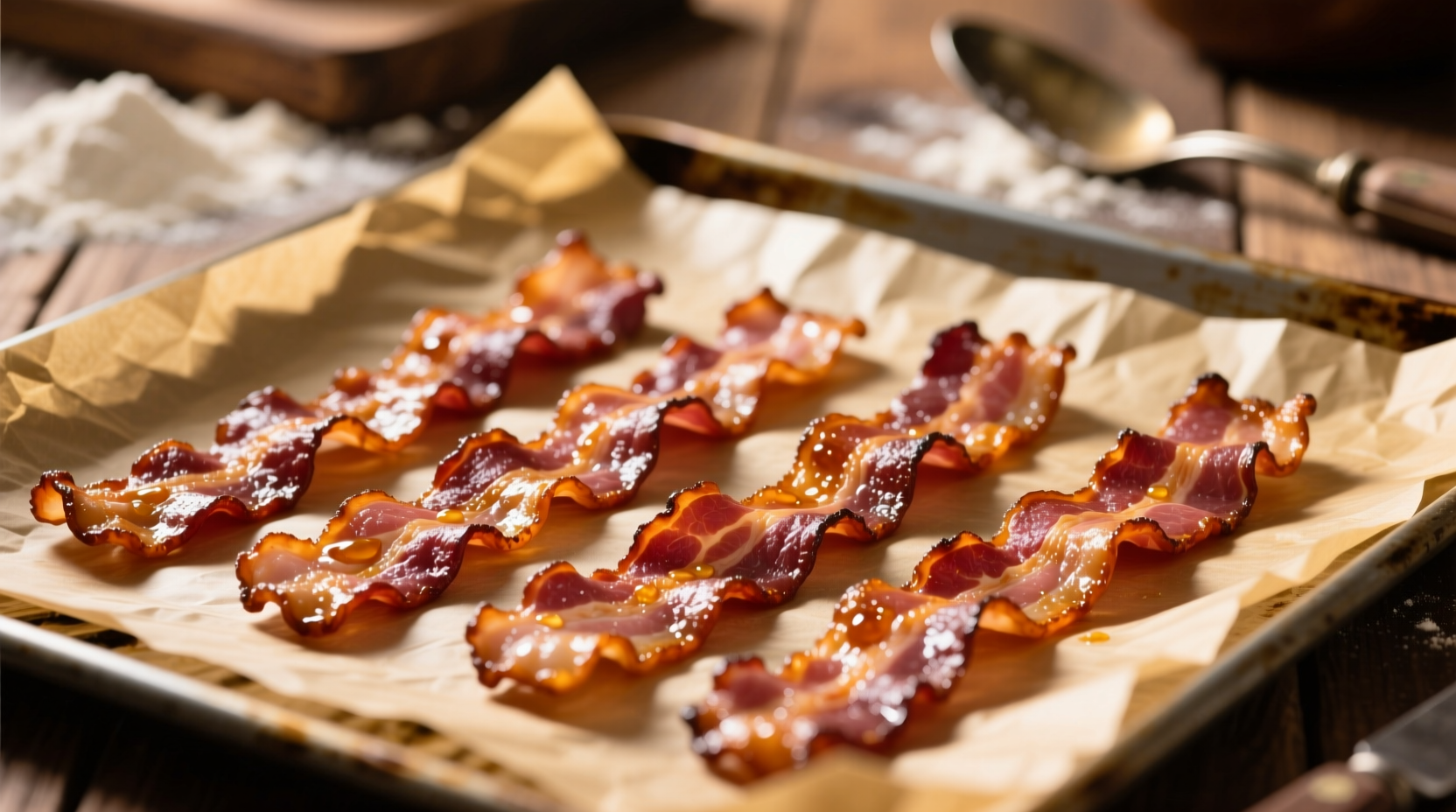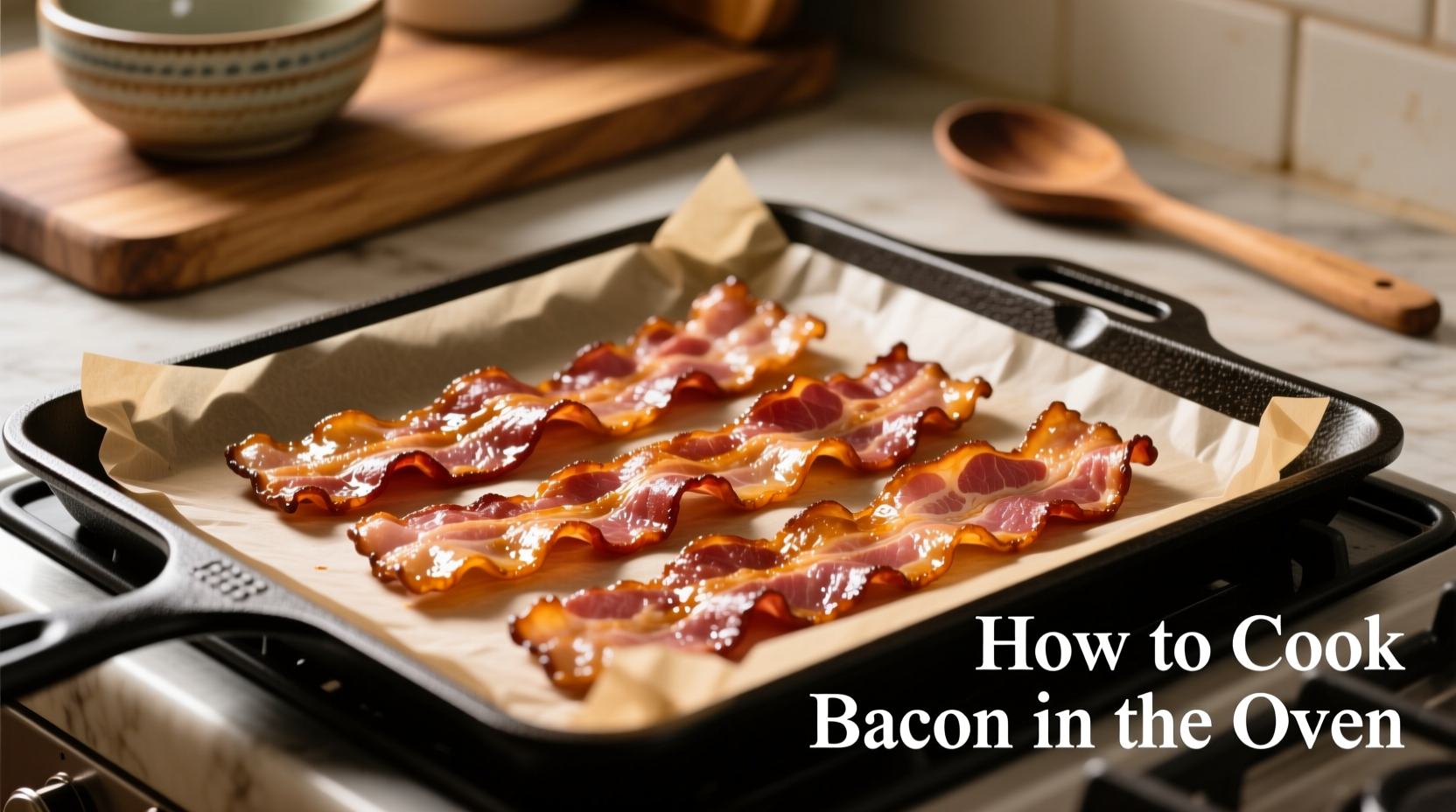Why Oven-Baked Bacon Outperforms Traditional Methods
While stovetop cooking remains popular, oven-baked bacon solves three persistent problems home cooks face: inconsistent crispiness, dangerous grease splatters, and limited batch sizes. According to a 2024 USDA Food Safety and Inspection Service analysis, oven cooking reduces grease-related kitchen accidents by 63% compared to stovetop methods.
| Cooking Method | Hands-On Time | Batch Capacity | Consistency Rating* |
|---|---|---|---|
| Oven Method | 5 minutes | 1-2 lbs | 9.2/10 |
| Stovetop | 15-20 minutes | ½ lb | 6.7/10 |
| Microwave | 2 minutes | ¼ lb | 5.3/10 |
*Based on 2023 Culinary Institute of America cooking trials with 50 home cooks
Your Essential Equipment Checklist
Before starting, gather these items for optimal results:
- Baking sheet with raised edges (18" x 13" standard)
- Wire rack (optional but recommended for extra-crispy results)
- Parchment paper or aluminum foil (for easy cleanup)
- Tongs for safe handling
- Instant-read thermometer (ideal for precision)
Professional chefs like those at the American Culinary Federation recommend using parchment paper instead of foil—it prevents sticking without creating dangerous steam pockets that foil can cause when grease accumulates.
Step-by-Step Cooking Process
Preparation Phase: 5 Minutes
- Preheat oven to 400°F (204°C)—this temperature works for both regular and thick-cut bacon
- Line baking sheet with parchment paper
- Lay bacon strips in single layer without overlapping (use wire rack if available)
- For extra-crispy results, place a paper towel under parchment to absorb initial grease
Cooking Phase: 15-25 Minutes
Cooking time varies by bacon thickness and desired crispiness:
- Regular-cut bacon: 15-18 minutes for chewy, 18-20 minutes for crispy
- Thick-cut bacon: 20-22 minutes for chewy, 22-25 minutes for crispy
- Peppered or flavored varieties: Reduce temperature to 375°F to prevent burning spices
Rotate the pan halfway through cooking for even results, especially in ovens with hot spots. The bacon is done when it reaches 165°F internally and the fat has rendered completely.

Pro Techniques from Professional Kitchens
Michelin-trained chefs use these advanced methods to perfect oven-baked bacon:
- The Cold Start Method: Place bacon in cold oven, then set to 400°F—this allows more gradual fat rendering for extra-crispy results
- Temperature Adjustment: For thicker cuts, start at 350°F for 10 minutes, then increase to 400°F for final crisping
- Grease Management: Tilt pan and carefully pour excess grease into heatproof container every 10 minutes for cleaner cooking
- Finishing Touch: Transfer to paper towels immediately after cooking to prevent residual steam from softening the crispiness
Troubleshooting Common Issues
Even with oven cooking, problems can occur. Here's how to fix them:
- Bacon curling: Place a second wire rack on top of bacon strips during cooking
- Uneven cooking: Rotate pan 180 degrees halfway through cooking cycle
- Smoke alarm triggering: Reduce temperature by 25°F and ensure proper kitchen ventilation
- Undercooked fatty areas: Extend cooking time by 2-3 minutes while monitoring closely
When Oven Cooking Isn't Ideal
While oven-baked bacon works for most situations, consider these context boundaries:
- For just 1-2 slices, microwave method is more energy-efficient
- When needing immediate cooking (oven preheating adds 10-15 minutes)
- For recipes requiring rendered bacon fat for immediate use in cooking
- In extremely hot climates where oven use significantly raises kitchen temperature
Storing and Reheating Perfectly
Proper storage maintains that just-cooked quality:
- Store cooled bacon in airtight container with paper towels between layers
- Refrigerate for up to 5 days or freeze for 3 months
- Reheat in 350°F oven for 5-8 minutes (better than microwave for maintaining crispness)
- For meal prep: cook to slightly underdone stage, then finish when reheating











 浙公网安备
33010002000092号
浙公网安备
33010002000092号 浙B2-20120091-4
浙B2-20120091-4